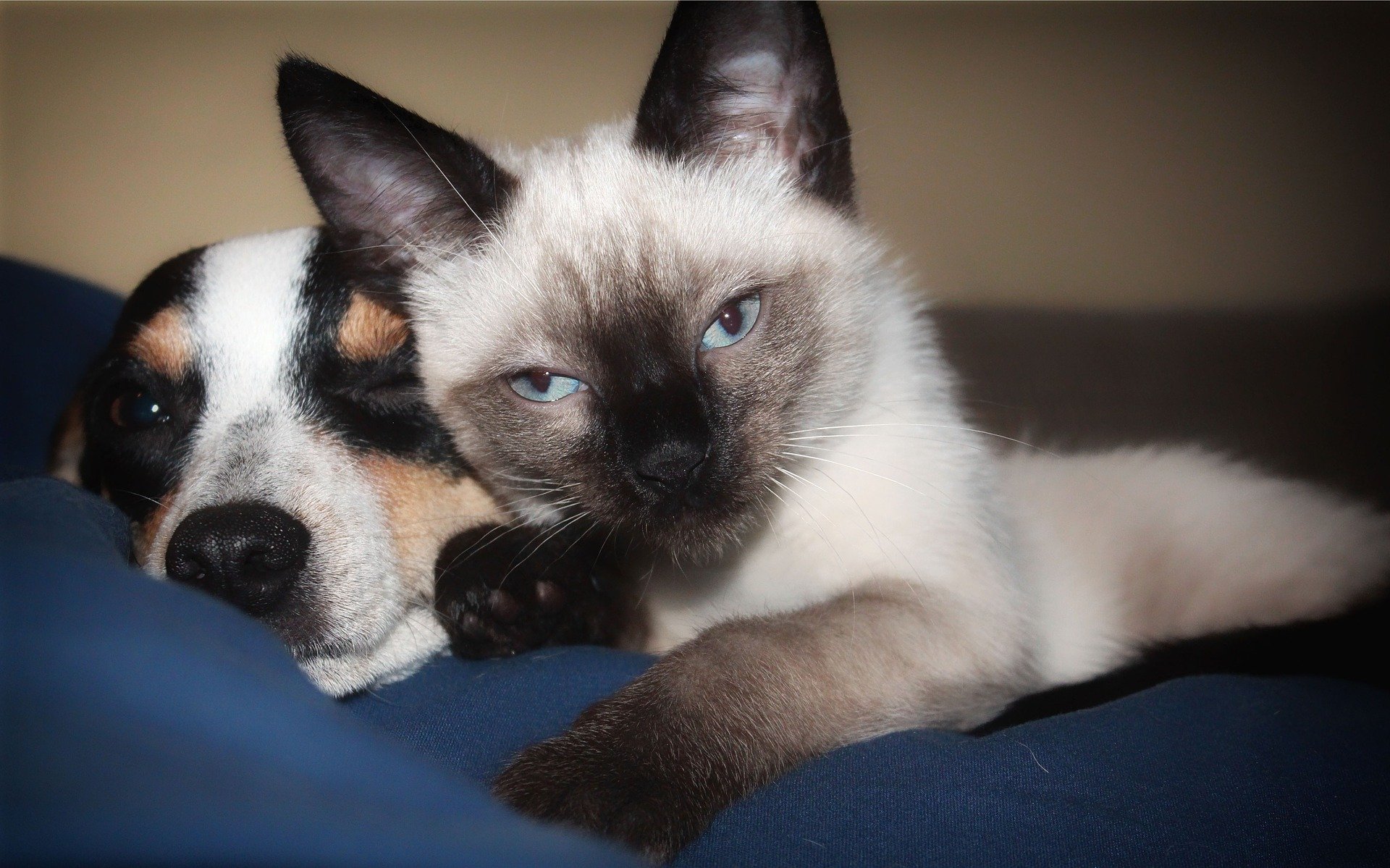
Is the dog cat friendly? The Truth about Spanish Stray Dogs and cats
Is the dog cat friendly? This is one of the most common questions that we as a charity receive when a potential adopter is looking for a dog.
No charity wants to put any animal in danger so a lot of thought and discussion goes into answering this.
The answer is that we can never be 100% sure on how a dog will get on with the resident cat.
Although cats and dogs are not natural enemies, their different psychologies and behaviours can set them apart and create issues. Animosity between cats and dogs can go from the very mild, where they really have no friendly interactions and just avoid each other, to the more extreme where a dog can seriously injure or kill a cat.
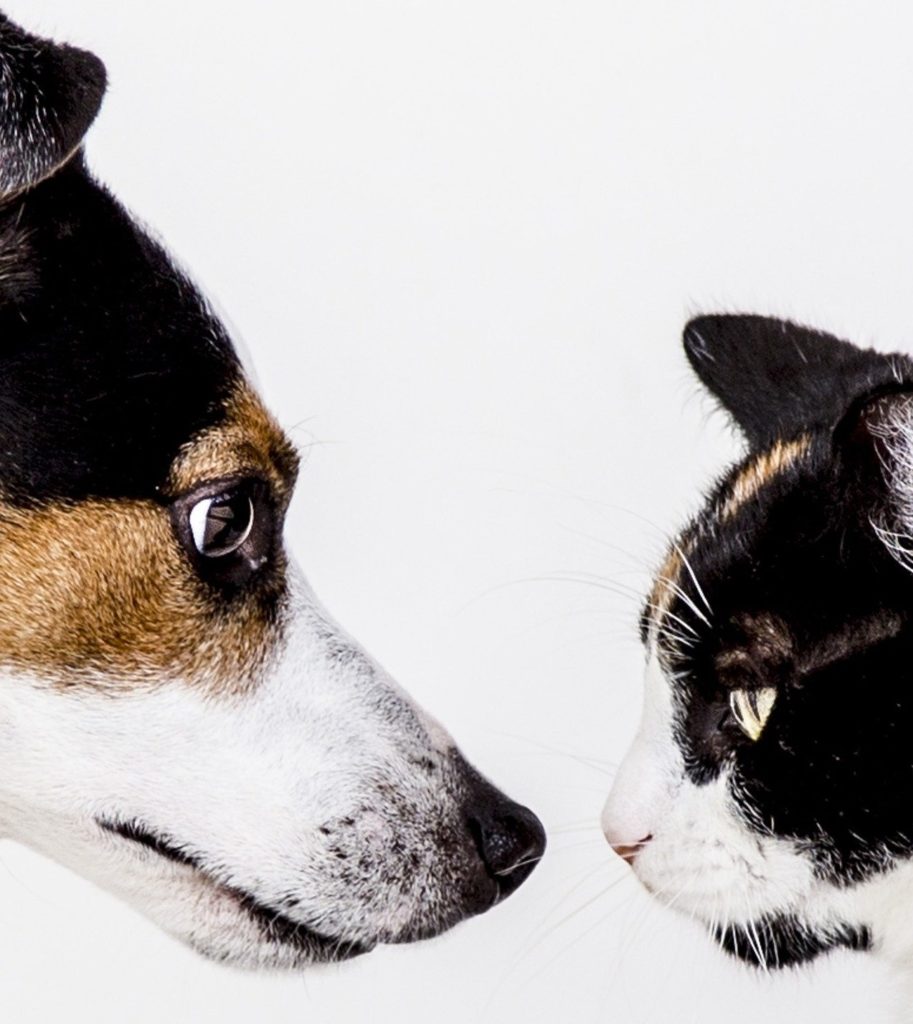
When introducing a dog to a cat there are a number of variables to consider, the dog as an individual animal with likes and dislikes, its breed, background, personality and the home setting. A lot of variables mean a lot of things to consider, and a lot of potential for things to go wrong.
We know that dogs that have been introduced to cats during their early development stages are more likely to live in harmony with them. Also, we know that some dog breeds, in particular hunting breeds, may be more primed to chase anything small that runs, whether that is a rabbit, a bird or a cat. However, all dogs are very individual on how they react to cats so breed on its own may not be an accurate guide on whether a dog will get on with a cat.
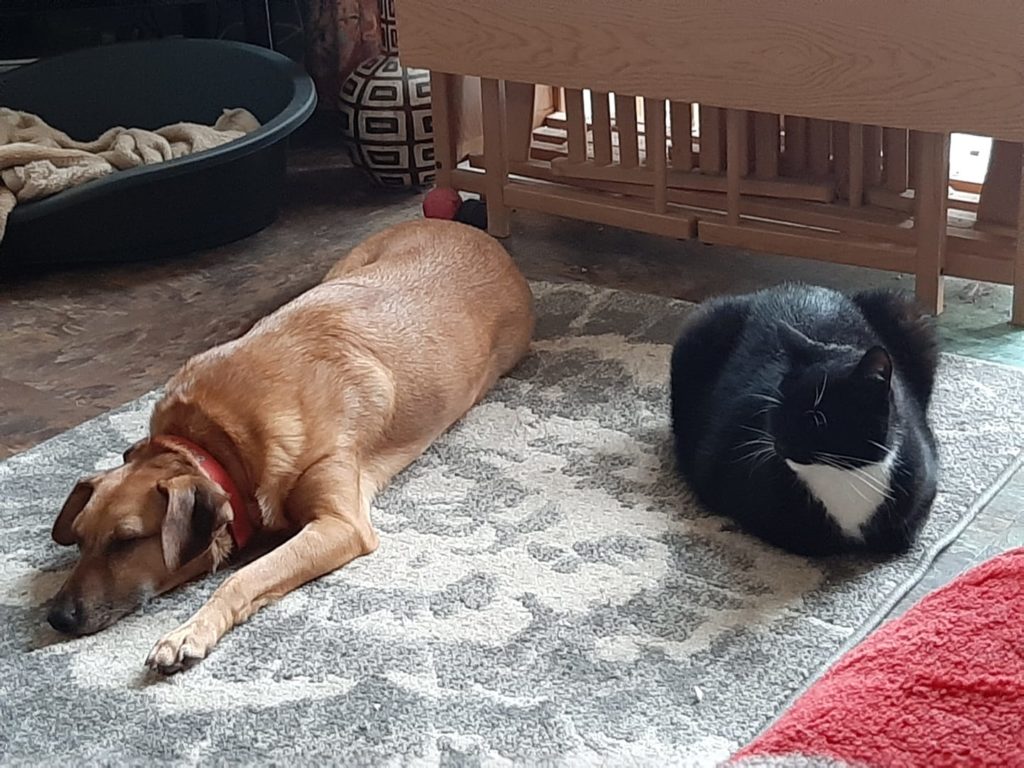
Dogs in Spain that have spent their lives as strays or living in pounds present a different challenge. For a start, it is unlikely that these dogs have had any sort of positive introduction to a cat during their early development period, so important for a dog to be relaxed and comfortable around another species.
On the streets of Spain cats compete for the same food sources as dogs both scavenging around bins, and this can plant the seeds for dogs to see cats as enemies. The fact that the dog will meet the cat at a time of huge hunger, when he is trying to protect its food source, will elevate his stress levels and cause an extreme reaction making him a potential predator.
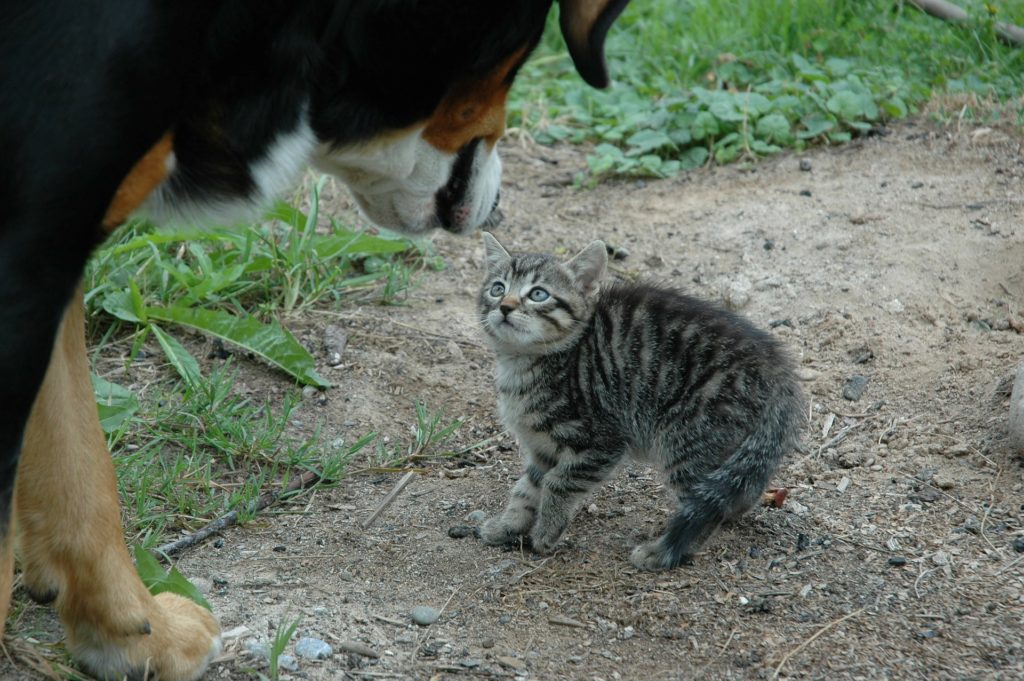
When in competition for a natural resource, cats and dogs have different language codes and are not able to communicate their intentions to each other as dogs would do among themselves. Therefore, in a conflict close-combat fighting may be inevitable when neither is prepared to run. Although most dogs and cats in the UK are in no need to fight for natural resources, abandoned dogs and cats in Spain still behave as their ancestors did in the 19th century when the streets would be littered with strays.
What about cat testing for dogs?
This is a normal practice with the aim to let us see how a dog behaves around a cat. It involves introducing the dog on a lead to the cat, who is usually behind a protective wire wall, and observe how much interest the dog shows in the cat. The more we learn about dog behaviour the more we realise that cat testing may be totally ineffective. Janine Davenport, a highly qualified behaviourist says “rescues need to stop cat testing. It is a novel situation for the dog that cannot be relied upon as a guide and it may be priming some dogs to chase cats”
Why is this the case? One of the reasons is that dogs in pounds live in captivity, an unnatural setting for which they must adapt sometimes hiding its true nature, switching off some traits whilst exaggerating others to survive. When dogs meet cats for a cat test, they do so in an artificial situation where the dog is in captivity mode, that is, on a lead and the cat is also in a contained environment. It is only when a dog is relaxed in a home in the presence of a cat, and where both have autonomy of movement that we can see what the dog’s true intentions towards the cat are. Sometimes it is just curiosity, sometimes they want to play, sometimes they are scared and do not know how to react, and sometimes their hunting instinct switches on and in a matter of seconds the dog can attack causing injury or death.
It is important to point out that this does not happen with all the dogs and the great majority of adopted dogs go on to live happy lives in homes with one or more cats. It is just that distinguishing the dogs that will struggle in this situation is nearly impossible. A study by University of Lincoln launched to find out what made for happy cat-dog relationships found that less than 10% of cats and only 1% of dogs ever harmed the other animal.
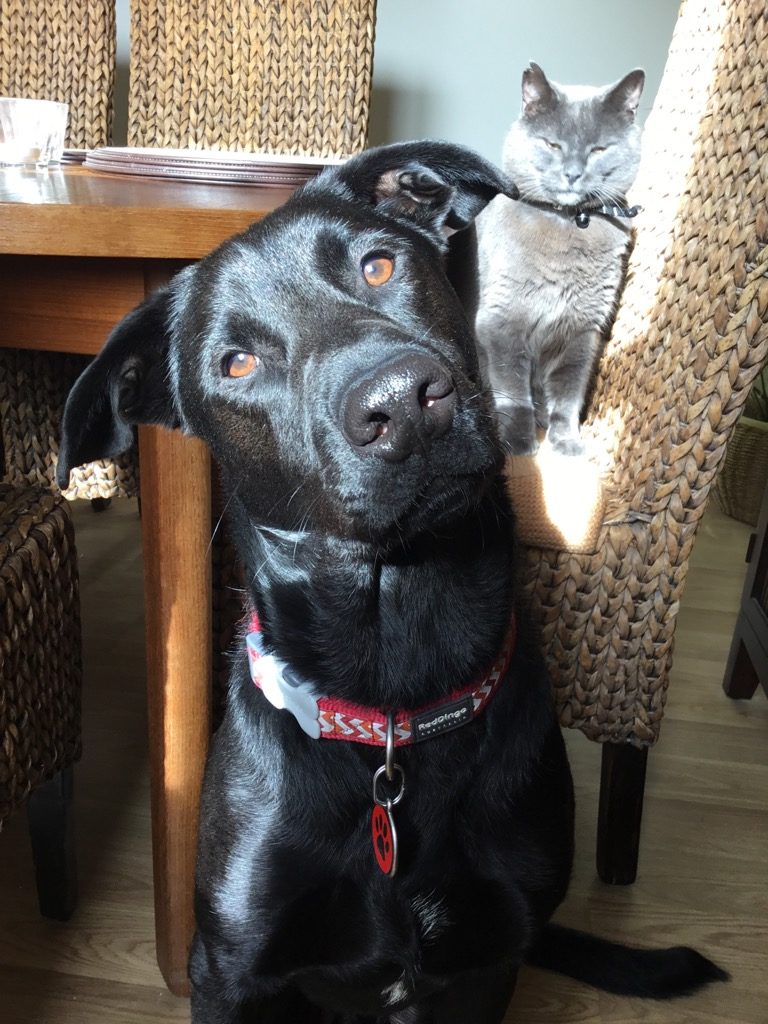
How can you help your dog and cat live happily ever after?
Often dog’s first instinct upon arriving to their new home is to chase the cat. To address this you need patience and an introduction protocol. Any mistake at this stage will just reinforce the dogs need to chase the cat. Janine Davenport says “There is no hard and fast rule with cats and there are many ways to introduce dogs to cats. Setting a room up with feliway and feliway collars a month before the dog arrives helps. Always look for qualified advice a month before arrival as each situation will be different” Your home must also be suitable to house both animals together, that is able to give its animal a comfort area where they go to if they wish to get away from each other.
What does your cat want?
Cats are territorial animals with very specific needs who may not welcome their owners’ decision to bring in a new resident to the home. The different psychology of both animals means that dogs sometimes can be seen as obtrusive and clumsy invaders. Although we are able to easily ascertain when our dog is happy or sad, we have more difficulty doing this with cats, as they do not have the many facial muscles that allow for the variety of expressions a dog can show. It is not easy for us to identify when a cat is sad, happy or stressed. What sometimes passes as indifference in a cat, it may mean high levels of stress and a very unhappy cat. So when you think about adopting a dog also consider the needs of your cat and how it can affect him.
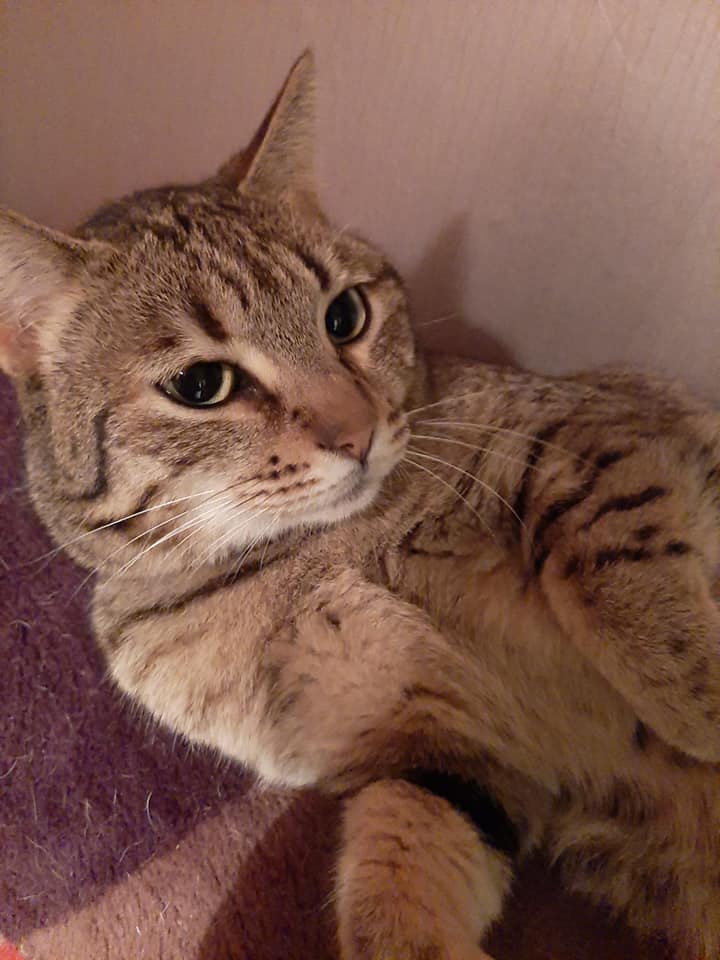
Adopt or not to adopt when you have cats?
Most of our adopters have dogs that are living happily with cats, but you must be aware that there is risk involved. Knowing as much as you can about your cat and dog and securing the support of an experience behaviorist will help, as well as having a home that allows for plenty of space for both.
Can you be sure that your newly adopted dog will love your cat? None of us can give you this assurance. Sometimes your cat and dog will get on fine since the first day they see each other, sometimes it will require time and effort and patience to make it work, and sometimes you may reach the sad realisation that your dog and cat will never get on.
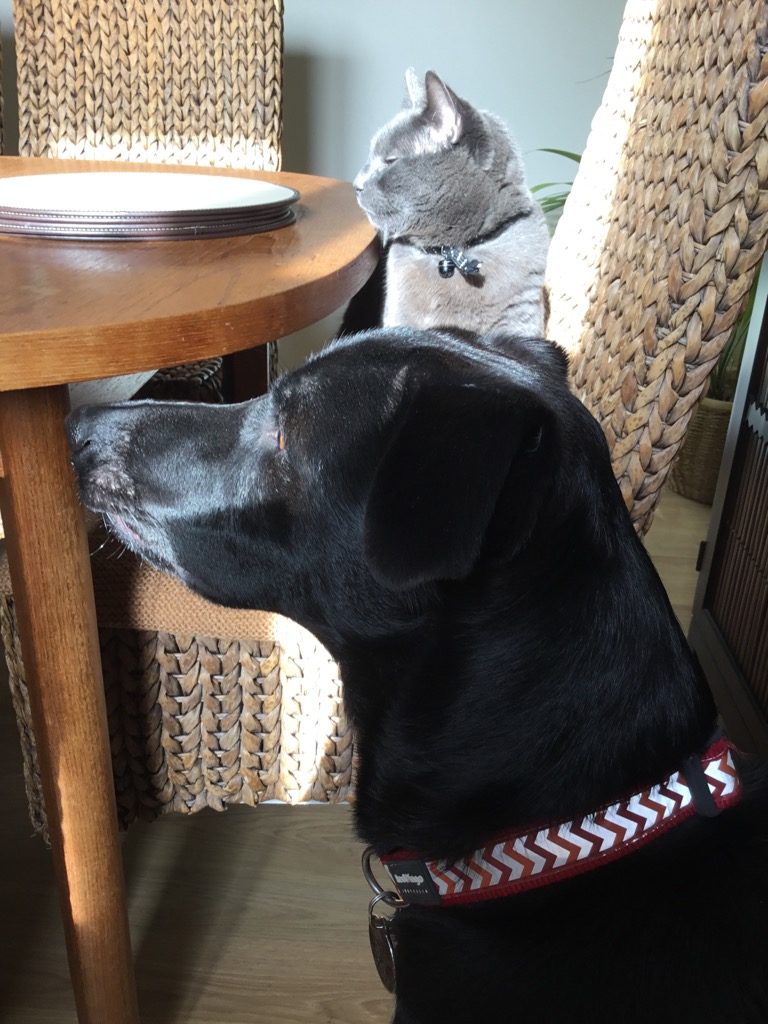
Blog written by Victoria Vazquez on behalf of Spanish Stray Dogs UK

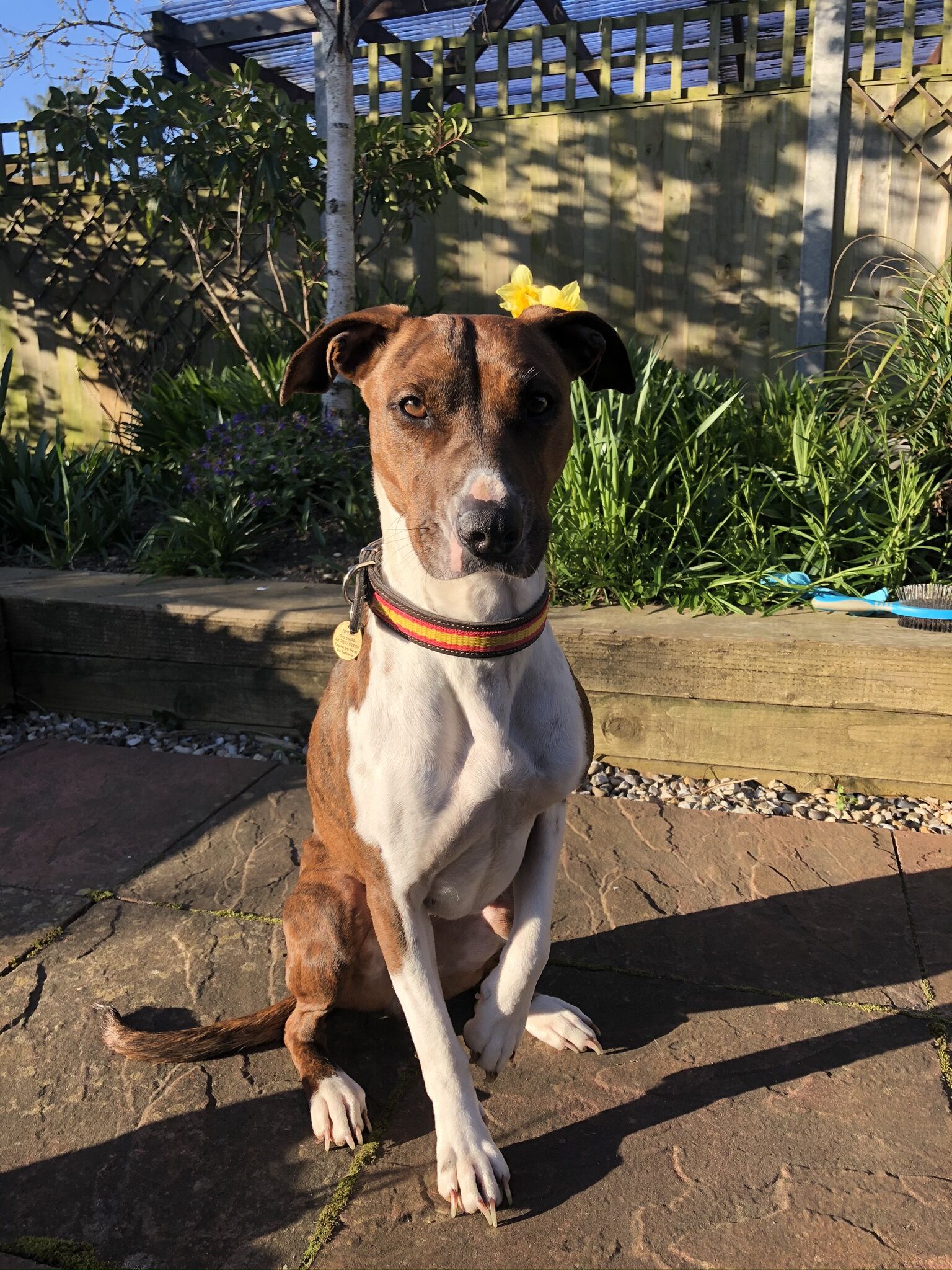
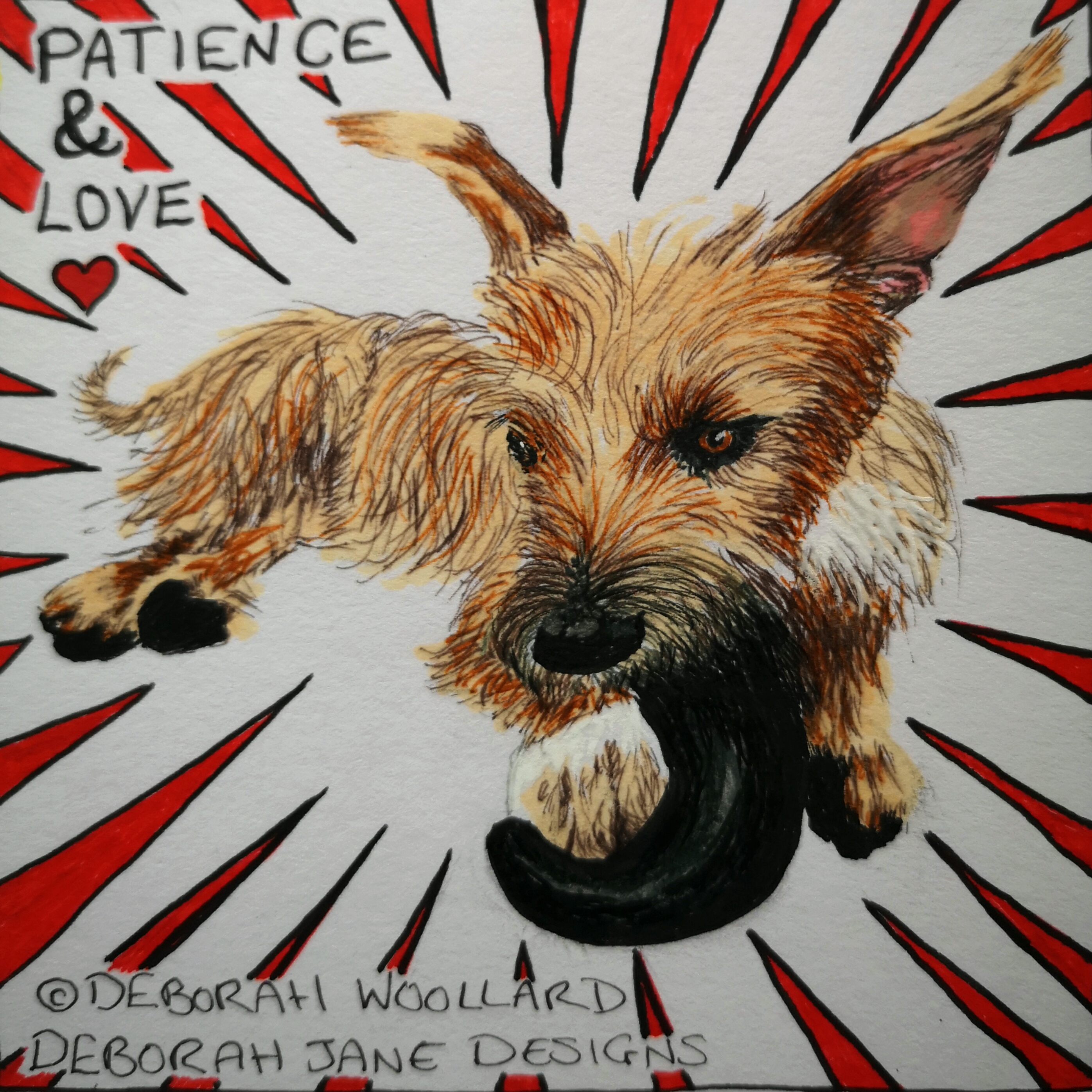
This Post Has 0 Comments